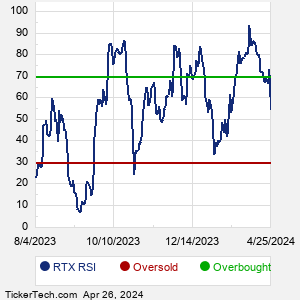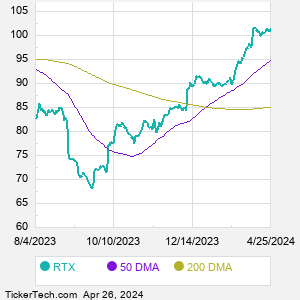RTX is an aerospace and defense company that provides systems and services for commercial, military and government customers. Co. serves commercial and government customers in both the original equipment and aftermarket parts and services segments of the aerospace industry. Co.'s operations are classified into four segments: Collins Aerospace, which provides aerospace and defense products and aftermarket service solutions; Pratt & Whitney, which supplies aircraft engines; Raytheon Intelligence & Space, which provides integrated space, communication and sensor systems, and cyber and software solutions; and Raytheon Missiles & Defense, which provides end-to-end solutions.
When researching a stock like Raytheon Technologies, many investors are the most familiar with Fundamental Analysis — looking at a company's balance sheet, earnings, revenues, and what's happening in that company's underlying business. Investors who use Fundamental Analysis to identify good stocks to buy or sell can also benefit from RTX Technical Analysis to help find a good entry or exit point. Technical Analysis is blind to the fundamentals and looks only at the trading data for RTX stock — the real life supply and demand for the stock over time — and examines that data in different ways. One of these ways is called the Relative Strength Index, or RSI. This popular indicator, originally developed in the 1970's by J. Welles Wilder, looks at a 14-day moving average of a stock's gains on its up days, versus its losses on its down days. The resulting RTX RSI is a value that measures momentum, oscillating between "oversold" and "overbought" on a scale of zero to 100. A reading below 30 is viewed to be oversold, which a bullish investor could look to as a sign that the selling is in the process of exhausting itself, and look for entry point opportunities. A reading above 70 is viewed to be overbought, which could indicate that a rally in progress is starting to get crowded with buyers. If the rally has been a long one, that could be a sign that a pullback is overdue. |



